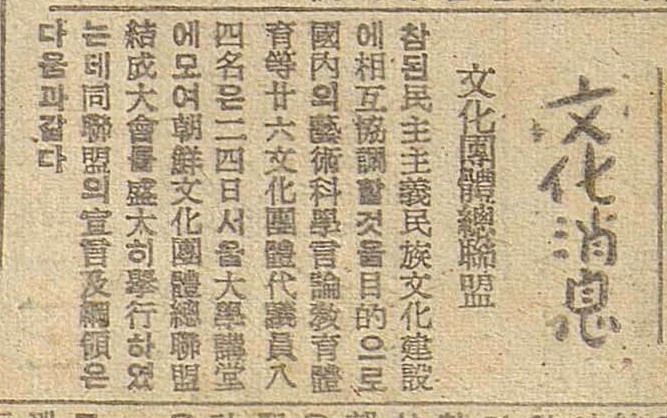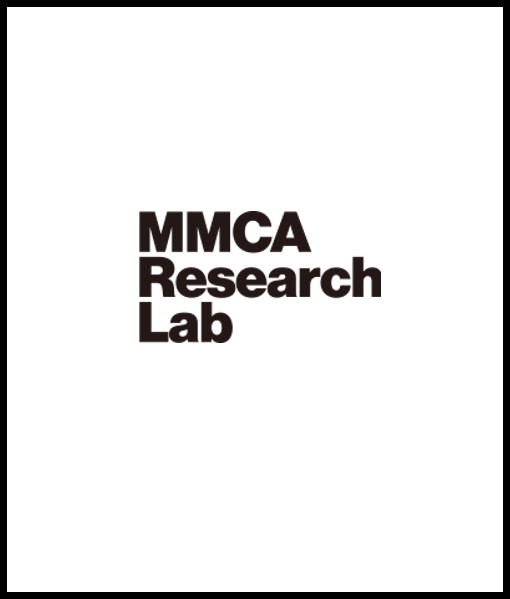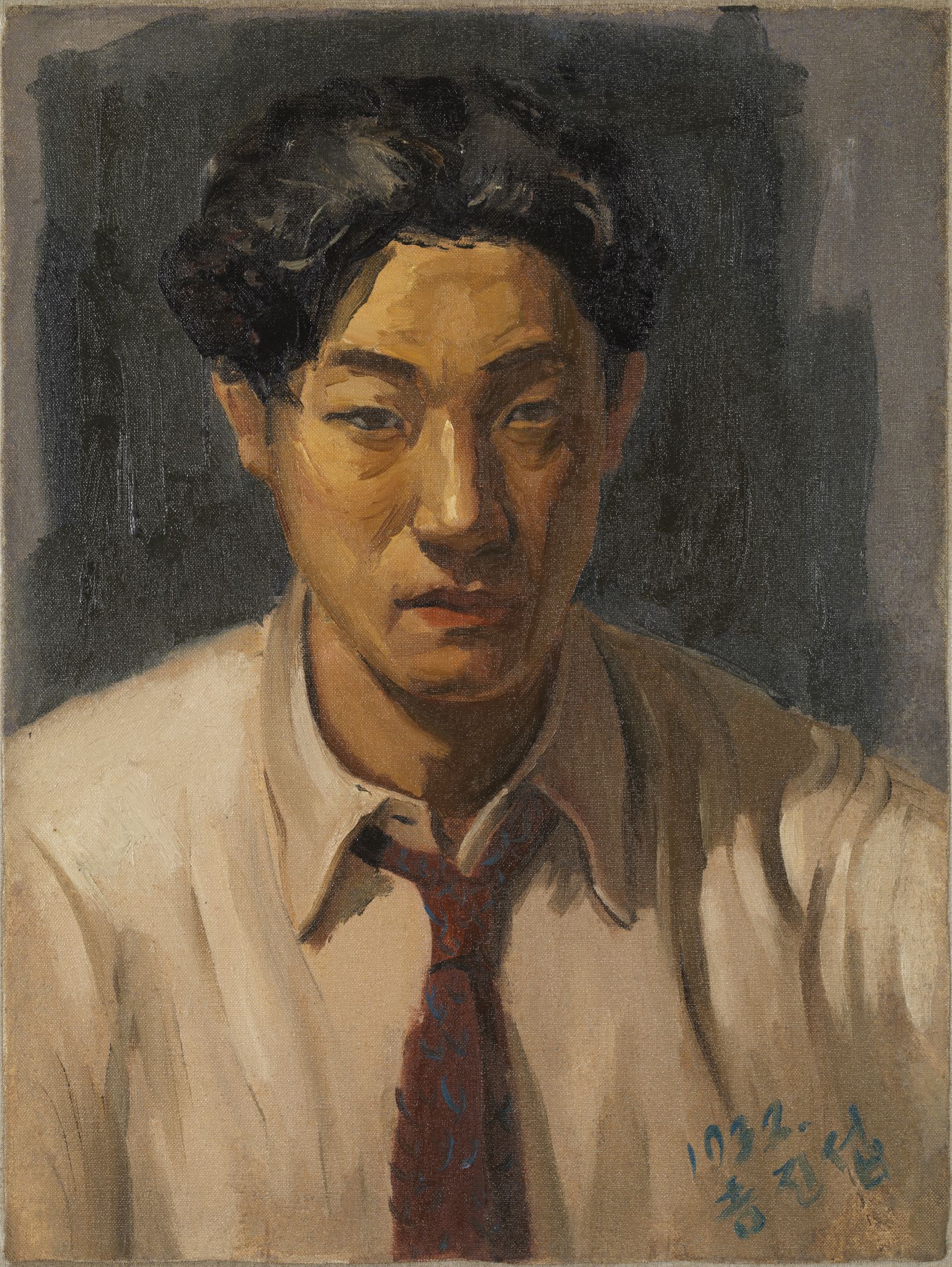
Joseon Misul (Korea Art) vol.1, 1958, Image provided by Kimdaljin Art Archives and Museum
Korean Artist Federation
* Source: Multilingual Glossary of Korean Art by Korea Arts Management Service
Related
-

Korean Art Alliance
An organization created in 1946 in North Korea. as the result of a merger between the socialist Korean Artist Federation (Joseon misulga dongmaeng), the politically moderate Korean Plastic Arts Federation (Joseon johyeong yesul dongmaeng), the Joseon Sculpture Association, and former members of the Korean Art Association (Joseon misul hyeophoe). Together, these associations collaborated to host an Independence Cultural Art Exhibition and founded the Korean Art Alliance (Joseon misul dongmaeng). The Alliance actively conducted enlightenment activities under the doctrine of “Art for Public Awareness” and leftist artists were the primary members. The leadership of the Alliance was comprised of Yoon Hee-soon, Lee Insung, Oh Chiho, and Gil Jinseop. The Alliance’s doctrines included the implementation of democracy, departure from the influences of imperialism, establishment of National Art, and the enlightenment of the populace. The Alliance engaged in raising public awareness about modern art through activities such as street exhibitions, touring exhibitions, and the production of posters and leaflets. The Korean Art Alliance (Joseon misul dongmaeng) was an influential faction within the art community of the 1940s, raising public awareness about art and issuing statements on political events before disbanding in 1948.
-

Korean Federation of Cultural Organizations
A cultural organization formed in 24 February 1946, also known as Munryeon. The alliance represented a total of 25 cultural organizations established after independence. Its membership comprised a total of 13 scholarly organizations, including the Joseon Haksulwon, Joseon Scientists Federation, Joseon Institute of Industry and Medicine, Joseon Institute of Legal Scholars, Joseon Linguistics Institute, and Joseon Institute of Women Scientists; a total of 9 art organizations, including the Korean Writers Federation, Joseon Theater Federation, Joseon Music Federation, Joseon Film Federation, and the Joseon Art Federation; and the Joseon Journalists Association, Joseon Educators Association, and Joseon Sports Association. The Munryeon's concerns included encouraging the rightful succession of national culture, a critical consumption of world culture, the importation and research of advanced scientific method, the development of new theories, democratic education of the masses, scientific enlightenment, and the exclusion of unscientific and undemocratic cultural tendencies. The group expressed support for the National Democratic Front. As such, right-wing members left the group and formed the Federation of Artistic & Cultural Organization.
-

Lee Insung
Lee Insung (1912-1950) was born in Daegu as the second son in a working class family. He graduated Suchang Elemantary School in 1928 and studied water painting at Seo Dongjin’s Daegu Art Studio. He joined a local art group, Hyangtohoe Association, from 1930 to 1934. He was first selected for the eighth Joseon Art Exhibition [Joseon misul jeollamhoe] when he was 17 years old, followed by consecutive special selections from the tenth to fifteenth exhibitions. He won a Changdeokgung Palace award in 1935 and became a Noteworthy Artist in 1937. He moved to Japan in 1931 to attend evening classes at the Taiheiyo Art School and rigorously focused on developing his art. After independence, he worked as an art teacher at Ewha Womans Middle School in 1945 and was a judge of Western painting at the first National Art Exhibition (Gukjeon) in 1949. He died in an accident during the Korean war in 1950. His work often featured vibrant color and free lines, and a creative structure. He pioneered a new style of art that featured the local color of Korea in original new ways.
Find More
-

Chung Chong-yuo
Chung Chong-yuo (1914-1984, pen name Cheonggye) enrolled in Osaka School of Fine Arts (Osaka Bijutsu Gakkō), and learned Japanese painting from Yano Kyōson after taking night classes briefly at Taiheiyo Art School in Japan. He became known in Korean painting circles by receiving an honorable mention with his Suburbs in Autumn at the Joseon Art Exhibition [Joseon misul jeollamhoe] in 1935. In 1939, he won the Changdeokgung Prize with Snow in March, and in 1940, he was awarded a special prize for Morning at Seokguram Grotto without review from a panel of judges. At the time he went back and forth to Seoul to study under Lee Sangbeom. He matured the plein-air landscape manner by adding the beauty of ink and brushwork in traditional painting to the Nanga (Southern painting) style he learned in Japan. He was well versed in bird-and-flower painting and figure painting and produced paintings in various formats, including a temple mural as seen in Portrait of Queen Seondeok at Buinsa Temple, and gwaebul (large hanging scrolls hung for outdoor rituals) such as Uigoksa Gwaebul. At the end of the Japanese colonial era, he created paintings reflecting the times. These paintings include State Protector King Geumgang Gongmyeong, Waiting for a Transport Ship, and Always Prepare Yourself As If You Were in a Battle Field. After Korea’s liberation from Japan, Chung Chong-yuo served as the head of the Ink painting section at the Korean Plastic Arts Federation [Joseon johyeong yesul dongmaeng] and the Korean Art Alliance [Joseon misul dongmaeng]. In 1946, he submitted his Procession on August 15 to the first Korean Art Alliance Exhibition and won the Democratic National Front Award. In 1948 and 1949, he enthusiastically engaged in artistic activities by holding solo exhibitions, where he presented Korean paintings that captured natural landscapes and social realities in a contemporary manner. However, immediately after the Korean War, he defected to North Korea. In North Korea, Chung was a member of the Korean Artist Federation [Joseon misulga dongmaeng] and worked as a professor at the Pyongyang Art University. He wrote art textbooks, such as Chaesaekhwae daehayeo (About color painting), Mukhwae daehayeo (About ink painting), Joseonhwa gibeop (Chosonhwa painting techniques), and Joseonhwa jaeryoe daehan sayongbeop (How to use Chosonhwa painting materials). He earned the titles “Laudatory Artist” in 1974 and “People’s Artist” in 1982 in recognition of his contributions to the establishment of North Korea’s Chosonhwa painting theories and the creation of related art works. Among his notable works are Gwaebul at Uigoksa Temple (1983, National Registered Cultural Heritage No. 614), Morning Clouds on Jirisan Mountain (1948), Farming Village in May (1956), and The People in Kosong Assisting the Front (1958).
-

Eom Doman
Eom Doman(1915-1971) was an artist who was active in Western painting and industrial art from the Japanese colonial era through the period of Korea’s liberation from Japan, and defected to North Korea during the Korean War. He graduated from Jugyo Public Common School in Seoul in 1929. He won an honorable mention at the Calligraphy and Painting Association [Seohwa hyeophoe] Exhibition in 1931 and the Joseon Art Exhibition [Joseon misul jeollamhoe] in 1937 with Portrait of Girl. In 1932, he took a job as a painter at the Dongyang Offset Printing Company in Seoul, and he worked as an art director in the design department of Yuhan Corporation from 1936 through 1939. In 1936, he participated in the founding exhibition of Nokgwahoe along with Lim Gunhong, Hong Sunmun, Song Jeonghun, Choi Gyuman, and others. Eom submitted his Figure and Landscape to the exhibition. His activity in Nokgwahoe continued until 1938. In 1939, he moved to Hankou in China with his closest friend Lim Gunhong, and opened the Hankou Art and Advertising Agency. Like Yerim Studio, which Lim Gunhong and Eom Doman operated in Gyeongseong, the Hankou Art and Advertising Agency engaged in a wide range of commercial art activities encompassing advertising for movie theaters and murals, interior design, and the production of cards and postcards. Immediately after Korea’s liberation from Japan, Eom returned to Korea and joined several art organizations. For instance, he was a founding member of the Association of Korean Industrial Artists ([Joseon saneop misulga hyeophoe], renamed the Korean Industrial Artist Association [Daehan saneop misulga hyeophoe] in 1954) established in December 1945. He was also active in the Korean Plastic Arts Federation [Joseon johyeong yesul dongmaeng] (established in 1946) and the Korean Art and Culture Association [Joseon misul munhwa hyeophoe] (established in 1947), among other organizations. The Korean Industrial Artist Association was an organization that industrial artists like Han Hongtaik, Lee Wanseok, and Jo Neungsik founded in order to “organically and comprehensively combine art and industry” and “create popular living art.” His activity in the Korean Art and Culture Association lasted until 1949. Among his colleagues were Lee Qoede, Lee Insung, Lim Gunhong, Han Hongtaik, Cho Byungduk, and Son Eungsung. In 1946, Eom held the Six Western-style Painters exhibition together with Lim Gunhong and Han Hongtaik, with whom he collaborated in several organizations. After the outbreak of the Korean War, he defected to North Korea during the recapturing of Seoul on September 28. In North Korea, he worked in various institutions and organizations, including the Korean Art Manufactory [Joseon misul jejakso] and Korean Artist Federation [Joseon misulga dongmaeng], where he produced propaganda posters and realistic oil paintings.
-

Gil Jinseop
Gil Jinseop (1907-1975) was born in Pyongyang, the son of pastor Gil Seonju of Pyongyang's Jangdaehyeon Church. His father was one of the 33 national delegates of the Mach First Independence Movement. In South Korea, it is considered that he died in 1975, but the North Korean Human geography indicates that he died in 1974. While at Soongsil High school, his painting Landscape was selected for the 1925 Joseon Art Exhibition [Joseon misul jeollamhoe]. Another work of his was selected for the Joseon Art Exhibition while he studied at the department of Western Painting in Tokyo School of Fine Arts. Later, he held a solo exhibition at the Pyongyang Commercial Art Gallery. After graduating from Tokyo School of Fine Arts in 1932, he started to actively participate in Mogilhoe Association, the White Savages Group, and the Yanghwa Art Coterie Exhibition. His style emphasized speedy and light lines, bright and vivid color sense, and margin and matiere. After Independence, he taught as a professor at the Fine Arts College, Seoul National University until April 1947. He was appointed as a leader of the Korean Art Construction Headquarters [Joseon misul geonseol bonbu], a vice-president of the Korean Plastic Arts Federation [Joseon johyeong yesul dongmaeng], and a head of Seoul branch of the Korean Artist Federation [Joseon misulga dongmaeng]. He moved back to North Korea after being appointed as a first representative of the Supreme People’s Assembly in August 1947. In later life he served as a faculty member at the Pyongyang Art School and a vice president of the Korean Artist Federation [Joseon misulga dongmaeng].






